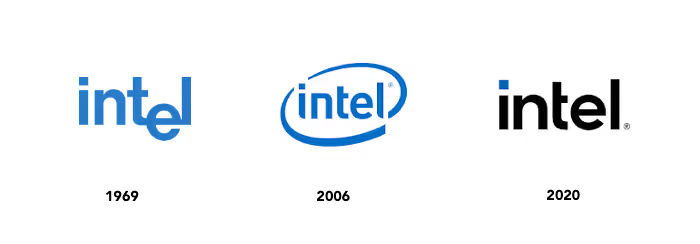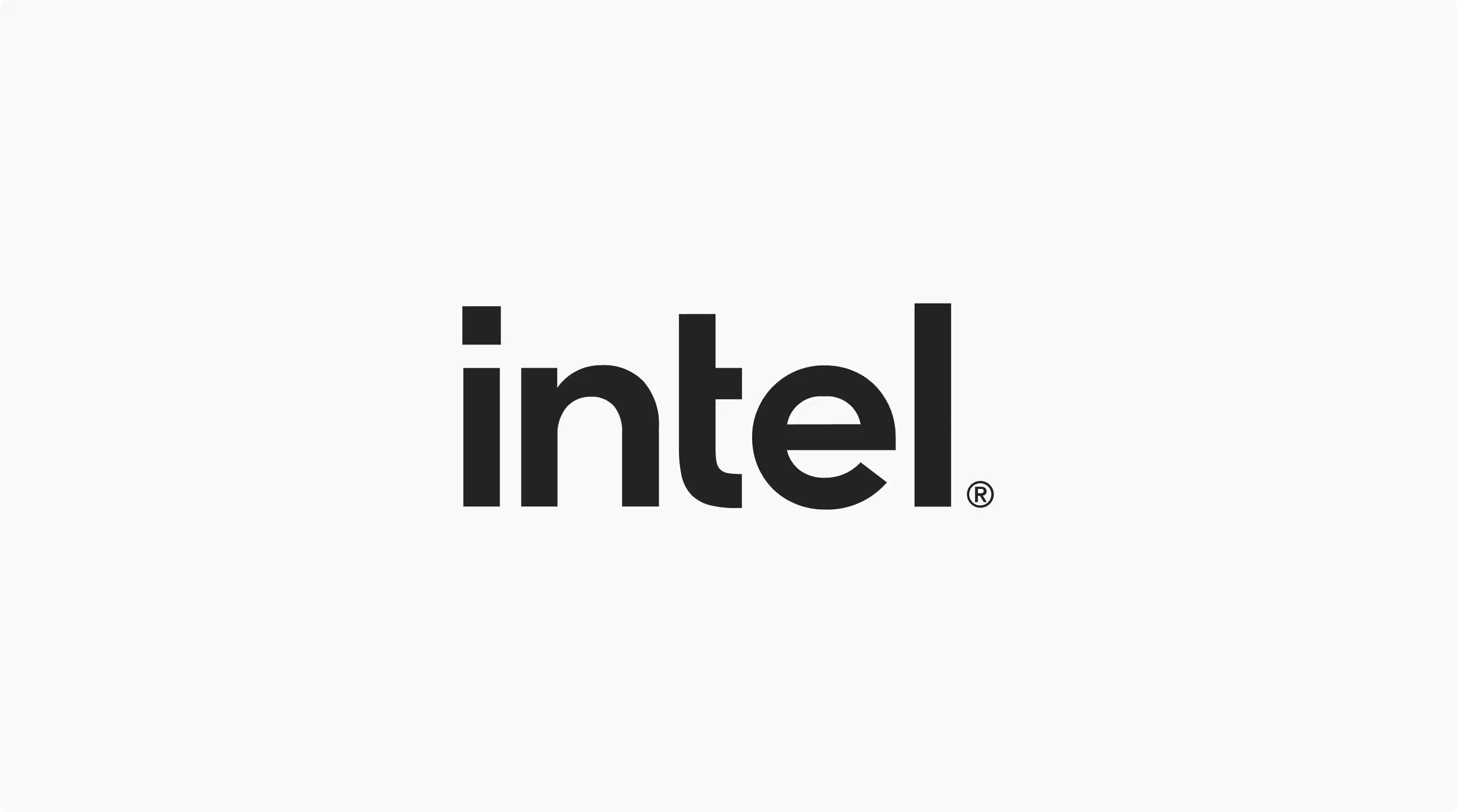Throughout November, we’ve been looking at major tech companies that rebranded during the tumultuous year of 2020 and what we can learn from their wins and failures. So far we’ve explored Medium’s most recent rebrand and new logo, Google’s reinvention of their G-suite into Google workspace, and Godaddy’s long-overdue transition from their iconic redhead logo. This time around, we’re diving into Intel’s new branding.
Intel announced its latest 11th Gen core PC processors and new chip brand Evo. Alongside this launch, the company also rolled out a new logo — the third it has ever used in the 51 years.

Intel got rid of the 2006’ iconic swirl leaving a stand-alone wordmark with a blue dot on the letter “i” symbolizing the company’s semiconductor history. Intel’s logo combines the elements of both 2006 and 1969 logotypes under the tagline “Our rich legacy drives our future”. Although coherent, the transformation sacrifices a little personality in the process.

Intel recognized that they were “too blue” and moved beyond it to a broader color palette, adding black, yellow, or even orange. This has allowed them to localize their marketing to different global markets (for example, adding red in marketing materials in Japan).
Intel’s rebrand is a timely attempt to reinstate the company as a go-to producer of processors, since various incumbents challenge their status, including Apple. The tech giant recently announced its own ARM processor, with others following suit in similar ways.
Final wunderthoughts:
Win:
Successfully expanding beyond the staple palette and logo and modernizing their look while embracing the legacy.
Loss:
Transformation sacrifices a little personality in the process.
Throughout November, we’ve been looking at major tech companies that rebranded during the tumultuous year of 2020 and what we can learn from their wins and failures. So far we’ve explored Medium’s most recent rebrand and new logo, Google’s reinvention of their G-suite into Google workspace, and Godaddy’s long-overdue transition from their iconic redhead logo. This time around, we’re diving into Intel’s new branding.
Intel announced its latest 11th Gen core PC processors and new chip brand Evo. Alongside this launch, the company also rolled out a new logo — the third it has ever used in the 51 years.

Intel got rid of the 2006’ iconic swirl leaving a stand-alone wordmark with a blue dot on the letter “i” symbolizing the company’s semiconductor history. Intel’s logo combines the elements of both 2006 and 1969 logotypes under the tagline “Our rich legacy drives our future”. Although coherent, the transformation sacrifices a little personality in the process.

Intel recognized that they were “too blue” and moved beyond it to a broader color palette, adding black, yellow, or even orange. This has allowed them to localize their marketing to different global markets (for example, adding red in marketing materials in Japan).
Intel’s rebrand is a timely attempt to reinstate the company as a go-to producer of processors, since various incumbents challenge their status, including Apple. The tech giant recently announced its own ARM processor, with others following suit in similar ways.
Final wunderthoughts:
Win:
Successfully expanding beyond the staple palette and logo and modernizing their look while embracing the legacy.
Loss:
Transformation sacrifices a little personality in the process.



.svg)

.avif)
.avif)
.svg)